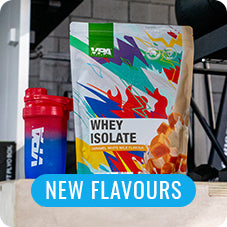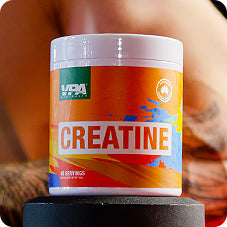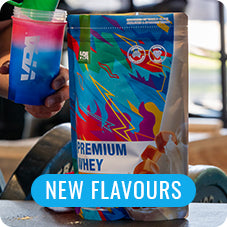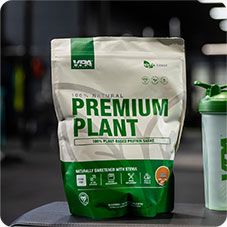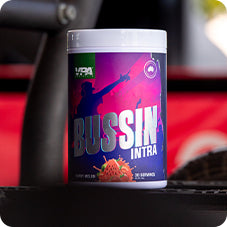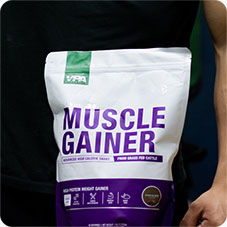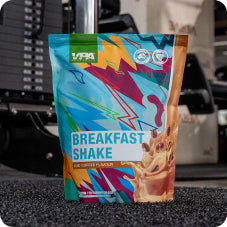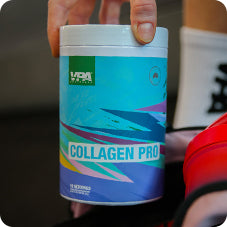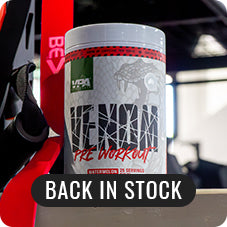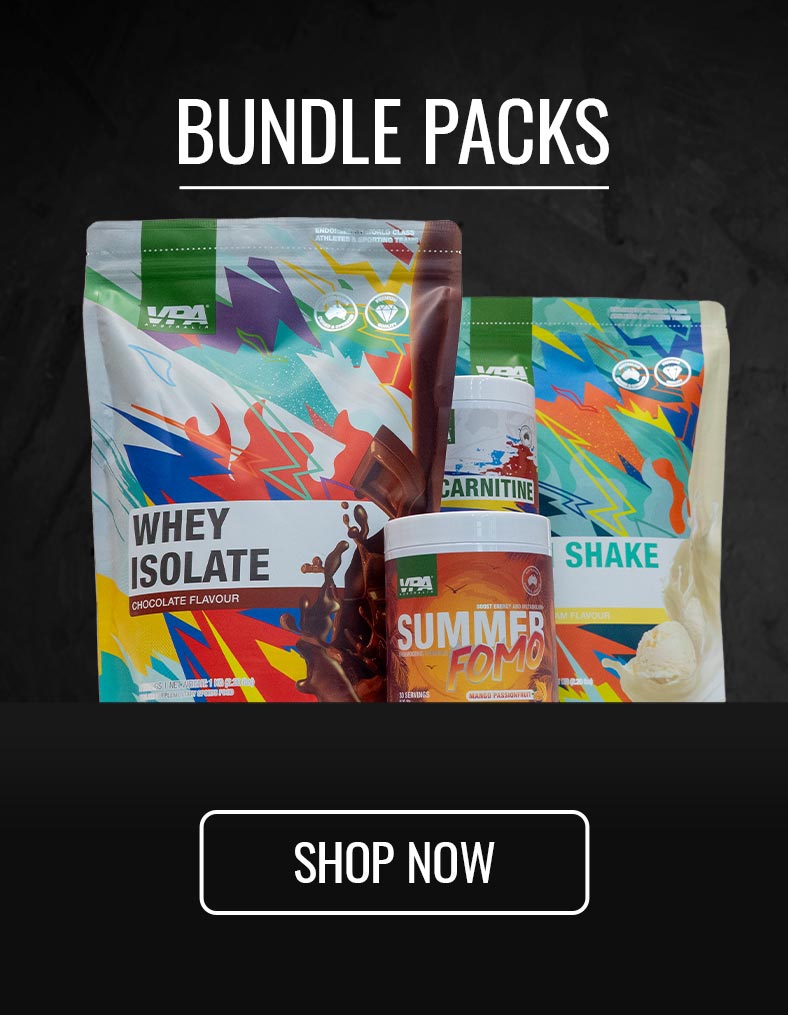- $0.00 AUD Subtotal
Mastering Meal Prepping for Health and Fitness: Tips, Inventory, Planning, Types, and Essentials
September 20, 2023 6 min read

In our hectic lives, finding time to eat healthily and stay on track with our fitness goals can seem like an insurmountable challenge. This is where meal prepping comes to the rescue. Meal prepping not only saves you time but also ensures you make nutritious choices that align with your health and fitness objectives. In this comprehensive guide, we'll provide you with valuable tips and essential ingredients to help you achieve your fitness goals.
Tips Before You Get Started on Meal Prepping
Setting Clear Goals:
Before diving into meal prepping, it's crucial to define your health and fitness goals. Are you looking to shed a few pounds, gain muscle, or simply adopt a healthier lifestyle? Having clear objectives will guide your meal prep choices and keep you on track.
Gathering the Right Tools:
A well-equipped kitchen is a meal prepper's best friend. Invest in high-quality food storage containers, a sharp set of knives, measuring cups, and a reliable food scale. These tools will not only make meal prepping more efficient but also ensure that your prepped meals stay fresh longer.
Planning Your Meals:
Meal planning is the bedrock of successful meal prepping. Spend some time creating a weekly meal plan that includes breakfast, lunch, dinner, and snacks. This plan will serve as your roadmap, ensuring that you stay focused on your health and fitness goals throughout the week.
Balancing Variety and Nutrition:
Variety is not only the spice of life but also the key to a well-rounded diet. Ensure your meal plan incorporates a diverse range of foods to avoid dietary boredom and provide your body with a wide array of nutrients. Balance your macronutrients (carbohydrates, proteins, and fats) to suit your specific needs and preferences.
Taking Inventory
Before you embark on your meal prepping journey, it's essential to assess your kitchen and pantry. Take inventory to ensure you have all the necessary items on hand:
Kitchen and Pantry Assessment
Start by examining your kitchen and pantry. What ingredients do you already have, and what do you need to restock?
Create a checklist of essential items such as spices, canned goods, grains, and staples that you'll use frequently in your meal prepping endeavours.
Organising Your Kitchen Space
A well-organised kitchen makes meal prepping more enjoyable and efficient. Clear out clutter and organise your workspace to ensure everything is within easy reach.
Dedicate specific sections of your refrigerator and pantry for meal prep ingredients to streamline the process.
Tips on Meal Planning and Prepping
Creating a Weekly Meal Plan
Meal planning provides structure to your meal prepping efforts. Consider the following tips for crafting a successful meal plan:
-
Include a variety of foods to ensure balanced nutrition.
-
Consider your schedule and plan simpler meals on busy days.
-
Prepare a shopping list based on your meal plan to avoid last-minute grocery store trips.
Portion Control and Packaging
Portion control is vital for managing your calorie intake and achieving your fitness goals. Invest in portion-controlled containers to help you maintain the right serving sizes. These containers not only simplify storage but also make it easier to grab and go.
Batch Cooking and Freezing
Batch cooking is a meal prepper's secret weapon. Spend a few hours on a weekend preparing large batches of your favourite meals. Portion them into containers and freeze them for future use. This method is particularly helpful on busy days when you don't have time to cook from scratch.
Proper Storage Tips
Properly storing vegetables and common perishable items in the refrigerator is essential to maintain freshness, prevent spoilage, and reduce food waste. Here are some storage tips for vegetables and common refrigerator perishables:
Vegetables
Leafy Greens (Lettuce, Spinach, Kale, etc.)
Remove any damaged or wilted leaves.
Store in airtight containers or resealable plastic bags with a paper towel to absorb excess moisture.
Keep them in the crisper drawer.
Broccoli and Cauliflower
Keep them in a perforated plastic bag or wrap them loosely in a damp paper towel.
Store in the crisper drawer.
Tomatoes
Store tomatoes at room temperature until they ripen.
Once ripe, place them in the refrigerator to extend their shelf life. Bring them to room temperature before using for the best flavour.
Bell Peppers
Store in a plastic bag in the crisper drawer.
Mushrooms
Keep them in their original packaging or a paper bag.
Avoid storing mushrooms in airtight containers, as it can cause moisture buildup and lead to spoilage.
Zucchini and Cucumbers
Place them in a perforated plastic bag or wrap them in a damp paper towel.
Store in the crisper drawer.
Common Perishables
Dairy Products (Milk, Cheese, Yogurt, etc.)
Keep dairy items in their original packaging whenever possible.
Store milk on a refrigerator shelf, not in the door, which tends to be warmer.
Keep cheese in airtight containers or resealable bags.
Eggs
Store eggs in their original carton to protect them from absorbing odours.
Keep them in the main body of the refrigerator, not the door.
Meat and Poultry
Keep raw meat and poultry in their original packaging or resealable bags.
Store them on the lowest shelf of the refrigerator to prevent any potential cross-contamination.
Fish and Seafood
Use seafood within 1-2 days of purchase for the best quality.
Store in an airtight container or wrap tightly in plastic wrap.
Leftovers
Allow leftovers to cool to room temperature before refrigerating.
Store in airtight containers or resealable bags.
Condiments and Sauces
Check the expiration dates regularly and discard any expired items.
Keep opened condiments and sauces in the refrigerator door, which is usually warmer, and unopened items on the shelves.
Berries (Strawberries, Blueberries, etc.)
Store berries in their original containers or in containers lined with paper towels to absorb excess moisture.
Keep them in the crisper drawer.
Herbs
Trim the stems and place fresh herbs in a glass of water, loosely covered with a plastic bag.
Change the water every few days.
By following these storage tips, you can prolong the freshness of your vegetables and common perishable items, reduce food waste, and ensure that your refrigerator maintains a clean and organized environment.
Selecting Recipes for Success
The success of your meal prepping journey depends on the recipes you choose. Keep the following in mind:
-
Opt for recipes that align with your health and fitness goals.
-
Look for dishes that can be easily portioned and reheated.
-
Experiment with new recipes to prevent mealtime monotony.
Different Types of Meal Prep
Meal prepping comes in various forms, allowing you to choose the approach that best fits your lifestyle:
Batch Cooking
Batch cooking involves preparing large quantities of meals in one go, which you can then portion and store for future consumption. It's an excellent choice for those with busy schedules or limited time to cook during the week
Ingredient Prep
If you prefer the taste of freshly cooked meals but don't have the time for extensive preparation every day, consider ingredient prep. Chop vegetables, marinate proteins, and prepare grains in advance so that you can quickly assemble meals when needed.
Daily Prep
Some individuals enjoy cooking daily. Daily prep involves dedicating a small amount of time each day to prepare your meals for that day. This approach ensures your meals are always freshly cooked.
Freezer Meals
Freezer meals are a lifesaver on hectic days. Prepare and freeze meals in advance, then simply thaw and reheat when you're short on time. This method is perfect for busy families.
Snack Prep
Don't forget about snacks. Preparing small portions of pre-cut vegetables, fruit slices, or yogurt cups can provide you with convenient, healthy snack options to satisfy your cravings.
Key Ingredients for Your Grocery List
When you head to the grocery store, make sure your list includes these key ingredients:
Lean Proteins
Chicken, turkey, tofu, lean cuts of beef, and fish are excellent sources of lean protein. They form the foundation of many healthy meals.
Fresh Vegetables and Fruits
Load your cart with colourful fruits and vegetables. They provide essential vitamins, minerals, and fibre for a well-rounded diet.
Whole Grains
Incorporate whole grains like brown rice, quinoa, oats, and whole-grain pasta into your meal plan for sustained energy and fibre.
Healthy Fats
Sources of healthy fats such as avocados, nuts, seeds, and olive oil add flavour and satiety to your meals.
Spices and Herbs
Stock your spice rack with essentials like garlic, ginger, basil, and paprika to enhance the flavour of your dishes without adding excess calories.
Nutritional Extras
Consider adding nutritional boosts like chia seeds, flaxseed, and nutritional yeast to your shopping list to enhance the health benefits of your meals.
Bottomline
Meal prepping is a powerful tool for those seeking to improve their health and fitness. With clear goals, the right tools, a well-organised kitchen, and a thoughtful meal plan, you can save time, eat better, and stay on track with your fitness objectives. Remember, success in meal prepping is all about consistency. Start today, embrace the process, and watch your journey to better health and fitness unfold with ease. Happy meal prepping!
Also in Diet and Nutrition

10 Quick Pre-workout Bites to Power Your Training
May 22, 2024 5 min read

Banish the Belly Bloat: Simple Solutions for a Flatter Feeling
May 20, 2024 6 min read

Navigating the Golden Years: Enhancing Mobility as You Age
May 08, 2024 4 min read
Recent Articles
- 10 Quick Pre-workout Bites to Power Your Training
- Banish the Belly Bloat: Simple Solutions for a Flatter Feeling
- Navigating the Golden Years: Enhancing Mobility as You Age
- A Comprehensive Dive into the World of Biohacking
- Why you should try the Mediterranean Diet
- Managing Blood Sugar Spikes: A Comprehensive Guide for Better Health
- Fuel Your Recovery: Unraveling the Importance of Post-HIIT Workout Nutrition
- 10 Spooky and Startling Health Facts for Halloween
- The Ultimate Guide to Tracking Your Macros Effectively
- Mastering Meal Prepping for Health and Fitness: Tips, Inventory, Planning, Types, and Essentials

